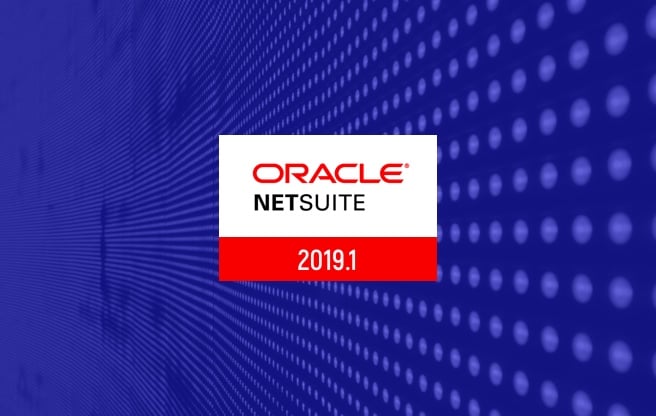NetSuite’s 2018.2 update, happening on October 12, 2018, includes many new and exciting enhancements. This blog features Techfino’s favorite updates that we think you should be aware of.
SuiteFlow
With the 2018.2 release, the list of workflow sublist actions continues to expand, as the “Send Email” and “Return User Error” actions can now be used per line item. Also, NetSuite introduces a few minor changes to enhance the workflow experience, such as increasing the context types available to select and saving workflow history when only in testing mode.
One of the bigger changes is the introduction of a new “Transition” mass update option. Currently, there is the option to initiate a workflow, cancel a workflow, and to process an existing workflow to the next state. The “Transition” mass update allows a workflow to transition from one state to any other state, even when there is no direct transition between the states. This is a very powerful tool for administrators to have available when manual adjustments are required for many existing workflow instances.
Period End Journal Entries
Current financial reporting in NetSuite will automatically calculate Retained Earnings, Net Income, and Cumulative Translation Adjustment at report runtime. However, this presented several problems for companies with subsidiaries that require journal entries to explicitly post these amounts at period end.
Fortunately, NetSuite will soon offer the ability to post Period End Journal Entries to satisfy this requirement for companies. During the Period Close process, companies can automatically generate these period end journal entries before fully closing the period. This feature can be enabled per subsidiary, and will utilize a new set Period End Financial Statement reports to display this information.
When enabled, subsidiaries will be able to generate Period End Journals to:
- Consolidate to parent subsidiary
- Close P&L balances to Retained Earnings at year end
- Balance sheet carry-forward
- Income Summary (2 step closing)
SuiteBuilder Advanced Printing
A number of improvements have been made to the Advanced Templates functionality. Firstly there is an improved field selector which features a search capability allowing users to easily find fields on the record, sublists or linked record and display them in the template. Secondly resizing of tables is much simpler, you can now simply drag the corners of a box to resize it the way you want. Finally all custom records will now have a Standard Template which can be customized and saved just like native record templates. The Standard Template for custom records will have all the fields of the record on the template by default, this is always updated when the record itself is updated, so if you add a new field to the record it will automatically be included in the Standard Template. These standard templates automatically will be created for all the existing custom records in your account when it is upgraded to 2018.2. These are small but welcome changes to an area of NetSuite which is often overlooked.
Integration Governance
Integration governance enforcement is still rolling out as part of 2018.2 release. Accounts that previously exceeded concurrency will have governance enforced in 2018.2 release. If the account is an active user of NetSuite application, however, the enforcement will be delayed to 2019.1 release. In addition to that, the following applications are excluded from governance limit.
- Bronto
- OpenAir
- NSPOS
- Outlook 4 NetSuite
- NS-PBCS
- NS-OWMS
- Electronic Bank Payments
If user has any doubt regarding account concurrency limit, this information will be available under Setup tab -> Integration -> Integration Governance. This page will show if enforcement has been enabled in this account and account concurrency limit. For those who have the APM tool installed, NetSuite will provide additional tool Concurrency Monitor to monitor concurrency usage over a user defined period. This will help user to determine if changes are needed to scheduled tasks in order to avoid concurrency issue.
NetSuite will also introduce Application Id in Restlet credential authentication. It is highly recommended to use Application Id in Restlet calls to add another layer of security and control. User can go to Setup -> Integration -> Manage Integrations to create new Integration and get Application Id from there.
Corporate Credit Cards
One of the main pain points of using Expense Reports in NetSuite was the inability to tie non-reimbursable expenses to the corporate credit card. Now that problem is solved. With its most recent release, NetSuite will now allow users to designate expense lines that are paid by corporate credit card. This will expose the lines to be reconciled in the reconciliation module, something that was not possible prior to this release. In addition, the GL Impact on the Expense Report is more realistic than before by incorporating the GL Account of the corporate credit card among the lines. This new feature is a big win for expense management users in NetSuite.
These are the features that we are most excited about. Share your favorite features in the comment box below!
Having shared our favorites, please contact us if you would like to discuss any of these features in detail!
Get Started Now
The easiest way to get started is to contact Techfino today. If you’d like a little more information first, you can download our ContinuedSuccess Whitepaper. Either way, we hope you’ve found this guide helpful and hope that we can further assist you on your path to leveling up your NetSuite Support.




